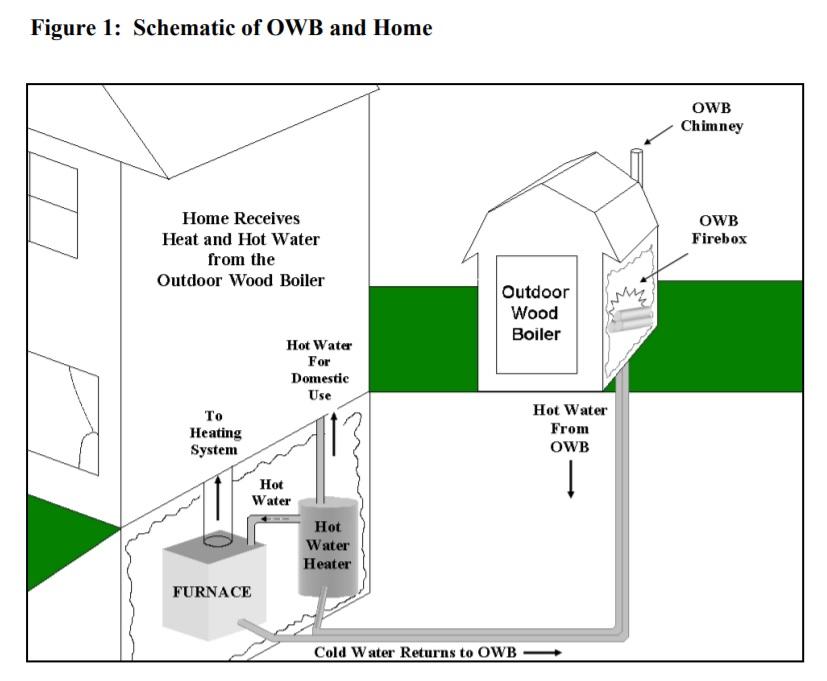Home Page
Installation Tips
How To Videos
How our outdoor stove works
The EZBoiler outdoor furnace is a natural draft system. It burns organic fuel and heats the water that is in the water jacket. The furnace water jacket completely surrounds the firebox. Water is pumped through an insulated line that is buried in the ground and attaches to an indoor furnace coil that is mounted in the duct work of your home. When your home calls for heat, only the furnace blower turns on, forcing air through the furnace coil and heating your house with the energy created in your outdoor wood stove.

Another advantage of this kind of system is that the water is constantly recirculated from the boiler to your house and back again. Therefore, when your thermostat calls for the fan to kick on, there is no wait time for the heat exchanger to reach the proper temperature. The heat energy is always ready and available to be distributed throughout your home.
Read more : How to Keep Garbage Cans from Tipping Over: A Helpful Guide to Can Security
It is also a much more gentle heat cycle than with a conventional indoor furnace. You don’t get that initial blast of very hot air when the blower first turns on, and you no longer have to put up with that uncomfortable period of cold air blowing out of your registers at the end of the heating cycle, when the heat exchanger is cooling down.
Of course, the most important reason to choose an outdoor furnace over an indoor stove is the safety factor. With the fire such a safe distance away, you’ll never have to worry about a house fire, or even a ruined carpet from a stray ember.
The aquastat operates like your home thermostat. It monitors the temperature of the water in the stove’s water jacket. When the water temperature falls below its set point, the aquastat sends a signal to the solenoid controlling the damper. The damper then opens to allow fresh air to enter the firebox, making the fire burn hotter, and raising the water temperature back up. Once the water has heated sufficiently, the aquastat closes the damper to slow down the burn rate.
The water capacity of each stove has been engineered for maximum efficiency and operation. A larger water tank would allow the stoves to cycle on and off less frequently; however, during milder weather, the time period between cycles would become great enough to result in a smoldering pile of ashes and wood that struggles to come back to life when needed. It would also cause more smoke and damaging creosote formation. Our stoves are designed to produce a smooth, steady transfer of heat that keeps your home warm and comfortable 24 hours a day.
Read more : How to Treat Wood for Outdoor Use (Best Methods in 2023!)
This design keeps moving parts to a minimum, ensuring a long stove life. If they ever need to be replaced, the process is a simple do-it-yourself operation, without the added cost of paying a repairman for his time.
It is very important when you first fire your stove to allow the water to come up to operating temperature (160° to 180°) before you actually start heating your home or other structure. If you start drawing heat out of the water too soon, the stove will not be able to catch up, and creosote will probably clog your chimney. Keep the water pump(s) operating, but don’t turn the indoor thermostat for the outdoor stove up until that operating temperature is reached.

Burn Times
Ideally, we like to be able to fill the stove twice a day, but there is no guarantee that every customer will achieve that goal. There are too many different variables, such as square footage being heated, fuel quality and age, building insulation, and changing weather. It takes practice and experimentation to find what is right for your stove during different weather conditions. But avoid the temptation to just cram it full every time. You will just waste fuel as an overcrowded stove can’t efficiently transfer the heat into the water being pumped through it.
Home Page
Owner’s Manual

Source: https://gardencourte.com
Categories: Outdoor


